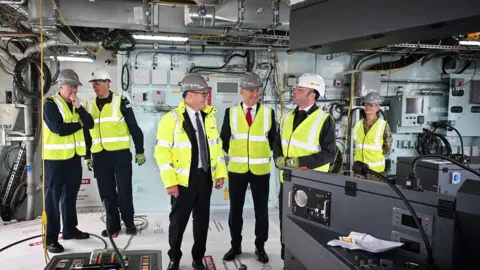In a significant move for the UK’s national security and military readiness, Prime Minister Sir Keir Starmer has unveiled a comprehensive defence strategy designed to guide the nation over the next decade. This ambitious initiative is grounded in a “root and branch” review of the United Kingdom’s defence capabilities. The review, led by former defence minister and NATO Secretary General Lord Robertson, thoroughly assessed the current state of military equipment, personnel, and the evolving threats facing the country.
The government has committed to adopting all 62 recommendations from the review, a clear indication of its intent to bolster the nation’s defence mechanisms. This strategic initiative aims not only to enhance military readiness but also to create economic growth and job opportunities across the UK.
### Strategic Goals
The government’s defence strategy emphasizes a “NATO-first” approach, underlining the UK’s commitment to the military alliance that has been pivotal since its inception in 1949. Central to this new policy is a shift towards prioritizing “war-fighting readiness” as the core function of the armed forces. Additionally, the strategy introduces the concept of a “defence dividend,” advocating that increased defence investments can drive national economic growth, thereby creating jobs and encouraging investment throughout the country.
### Army, Navy, and Air Force Enhancements
The strategy also outlines plans for an extensive overhaul of the Army, Navy, and Air Force. It proposes the development of a hybrid Royal Navy, which will employ aircraft, drones, warships, and submarines to patrol the North Atlantic and beyond. Meanwhile, the Army aims to become “10-times more lethal” by integrating air defence systems, artificial intelligence, long-range weapon capabilities, and land drone swarms.
The Royal Air Force (RAF) is poised for a transformation as well, including the introduction of state-of-the-art F-35 jets, Typhoon aircraft, and autonomous systems. In a bid to strengthen international ties, the Ministry of Defence plans to establish a new defence exports office dedicated to exporting military technology and equipment to allied nations.
### Nuclear Plans
The government’s strategy also incorporates ambitious plans for nuclear capabilities. A central feature is the construction of 12 new attack submarines as part of the AUKUS trilateral security pact with Australia and the United States. The government aims to deliver one new submarine every 18 months. Additionally, there is a £15 billion investment earmarked for the renewal of the Trident nuclear deterrent system, which the government claims will also generate approximately 9,000 jobs, contributing to broader economic growth.
### Personnel and Reserves
In terms of personnel, while there are plans to slightly increase the number of full-time soldiers in the British Army to 76,000 post-2029, this expansion is contingent on adequate funding. Plans also include a commitment to a fully-trained strategic reserve that can be mobilized quickly when necessary. Furthermore, over £1.5 billion has been allocated to improve accommodation for service personnel, signaling an investment in the welfare and living conditions of the armed forces.
An additional goal is to increase the number of Armed Forces cadets by 30%, along with the introduction of a voluntary cadet gap year for school and college leavers, providing routes into a military career for younger generations.
### Cyber Capabilities
In the modern age of warfare, cyber capabilities have become paramount. The strategy outlines a £1 billion investment aimed at expediting battlefield decision-making processes and enhancing the rapid integration of weapons systems. The establishment of a new Cyber and Electromagnetic Command is planned to lead both defensive and offensive cyber operations, as well as electromagnetic warfare capabilities.
### Weaponry, Equipment, and Innovation
When it comes to weaponry, the government plans to allocate a substantial £11 billion annual budget for front-line equipment. This includes building at least six new munitions factories, backed by a £1.5 billion government investment, which is expected to create more than 1,000 jobs. Furthermore, plans to produce around 7,000 long-range weapons and a £400 million investment in a UK defence innovation organization indicate a strong commitment to advancing military technology.
With these key points in mind, the UK government’s defence strategy not only aims to enhance military capabilities but also seeks to reinforce the nation’s position on the global stage while driving internal economic growth and innovation. The implications of these extensive plans, while promising in securing Britain’s future, will need to be monitored closely to ensure successful implementation and alignment with fiscal responsibilities.



